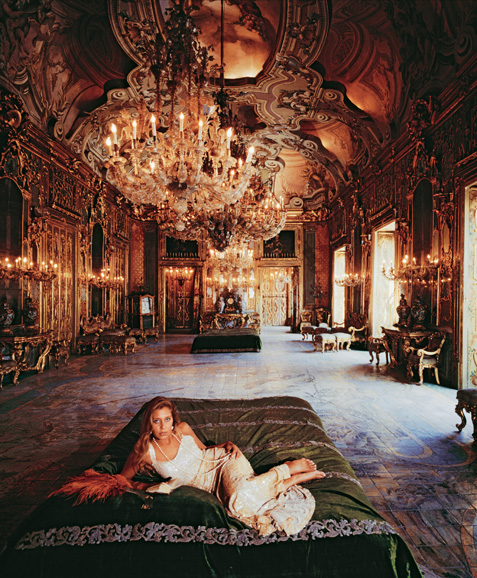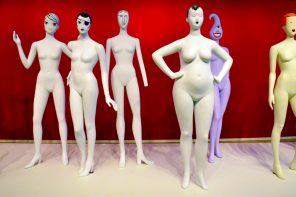Slim Aarons may be the quintessential WAG magazine subject. The longtime Katonah resident (1916-2006) spent most of his professional life photographing the rich and famous. And yet, Aarons was no mere chronicler of what we would call the 1-percenters, says Laura Hawk, writer and editor of “Slim Aarons: Women” (Oct. 4, $85, 239 pages), the fifth volume in Abrams’ Slim Aarons Collection.
“What made him tick was leisure, play,” says Hawk, who was his longtime assistant. “That’s what came out of his work and what blew me away when I first met him as a serious 20-something-year-old. …It’s what led him to the rich and famous. Who does leisure better?”
A Tom Sawyer-like hellion raised by his New Hampshire grandparents after the death of his parents, George Allen Aarons discovered photography when his grandmother gave him a camera as a way of focusing the rebellious teen. After high school, he joined the Army and was designated to serve as a military photographer during the event that would come to define his generation — World War II. At the Battle of Anzio (1944), one of the most important of the Italian campaign, a bomb landed near the press corps encampment and Aarons suffered a head wound. He would be awarded a Purple Heart for his injuries.
The war provided him with an epiphany: Thereafter, he would use the work in fun to locate the fun in work.
“…I’d had a bellyful of the horrors of war,” the book — a kind of coffee-table vacation — quotes him as telling friend and editor Frank Zachary. “From now on I’m going to walk on the sunny side of the street. I’m going to have fun photographing attractive people doing attractive things in attractive places and maybe take some attractive photographs as well.”
A job as a freelancer taking party pix provided an entrée to the top echelon of magazines — Life, Town & Country, Look and Travel + Leisure, among them. But what enabled him to navigate the social circle in which he now found himself was the sheer force of his personality. Self-invented and self-assured (sometimes to the point of brusqueness), Aarons would breeze into a place and hold court with his marvelous storytelling.
“He proved he could deal with these private people. He was a master at that,” Hawk says. “He had a lightness and a levity with these very serious, stuffy people.”
By “people,” Hawk means women. Though the book contains what may be Aarons’ most famous work — the “Kings of Hollywood” photo showing Clark Gable, Van Heflin, Gary Cooper and James Stewart laughing it up at Romanoff’s in Beverly Hills on New Year’s Eve, 1957 — there’s a reason it’s called “Slim Aarons: Women.” He photographed mainly women whom he identified as having a certain style, creating a body of work that is particularly revelatory in the age of Photoshop.
His photographs were posed rather than overly staged (with the exception of fresh flowers and, possibly, his trusty fuchsia pocket square for color). Aarons used no fancy equipment beyond a Nikon or Leica, a light meter, a strobe light and a reflective cloth, preferring to work with natural light whenever he could. He had no entourage beyond Hawk, who started out writing captions and quickly graduated to go-fer and go-between, delivering a bag of Kodachrome film rolls — which he said contained the best color — to the now-defunct Jaydee Camera at the end of each 10-day trip.
The results are works that stride the delicate balance between the artificiality of the medium and the naturalness of the subject. There’s the French actress Capucine — her head swathed in a scarf, a smile at play on her lips — the light lines of her brow, eyes and mouth as much a part of her face as its exquisite bone structure. There’s photographer Inge Morath — third wife of playwright Arthur Miller and mother of writer-director Rebecca Miller — the top of her modest two-piece swimsuit gaping slightly, a hint of cellulite under her thighs as she delightedly turns her face to the sun poolside.
For every goddess shot — including the iconic one of muse C.Z. Guest in white shorts with son Alexander and their dogs set against the backdrop of their Palm Beach pool, Grecian temple to Artemis and the Atlantic — there are countless portraits of attractive but approachable women like Morath. And though the women are often clad in beachwear, they are never objectified.
That’s because while Aarons was a man of his times, who saw women as subservient to men, he never crossed over the line of the professional photojournalist with his subjects or with his assistant, Hawk says.
“There was a naïve or innocent aspect in his approach to people,” she says.
A New Yorker with Midwestern roots, Hawk met Aarons for the first time at her mother’s Park Avenue apartment in the early 1980s. At that time, Hawk — a graduate of The University of Texas at Austin — was working on an Oklahoma cattle ranch, and her mother was desperate enough to get her back to New York that she engineered an informal meet with Aarons, by then roving editor of Town & Country.
“You’re going to love me, and you’re going to hate me,” the demanding Aarons said presciently in departing, and Hawk imagined that she wouldn’t last beyond the first shoot.
But she stuck it out, ultimately moving to Bedford with her own family to be closer to Aarons. (Hawk, who worked on the first volume in Abrams’ Aarons series, “Once Upon a Time,” now lives in Pound Ridge.)
So did his parting words at that first meeting prove true? Hawk laughs. He was a complex, frustrating man, she says. But he was like a grandfather to her two children.
In the end, it was “100 times more love than hate.”
For more, visit abramsbooks.com and gettyimages.com.





